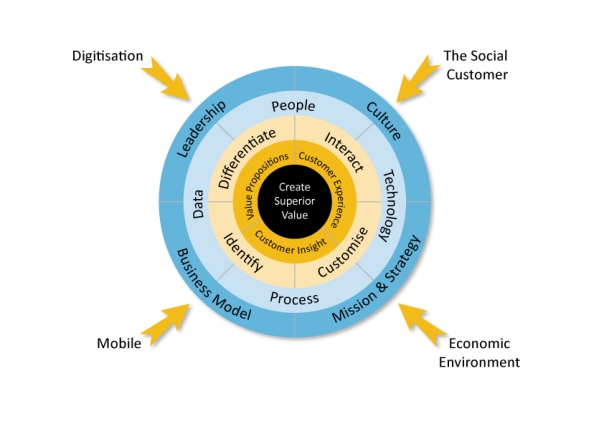Need to improve the customer experience?
Sometimes a real world example of poor customer experience comes along that allows you to explore real world challenges in improving the customer experience. I am thinking of the recent report on the treatment of elderly patients in the UK hospitals which has caused quite a fuss even though relatives of elderly patients have been complaining of poor treatment for many years.
Let’s say that you want to improve the customer (patient) experience. Where do you start? There are all kinds of opinions on the root causes that have ‘driven’ compassion out of the failing hospitals. If you read the papers or have listened to the radio (as I have) you will notice that the finger is being pointed at the following:
- The nurses do not care (they do not have the aptitude) and/or are badly trained;
- The focus of hospital staff is on filling in the forms, ticking the right boxes, processing patients and not getting into trouble with management;
- The Top are not exercising the right kind of leadership;
- Demand exceeds resources and so expensive nurses have been replaced by cheap Care Support Workers to balance the books;
- The focus of the hospital leadership is on hitting targets set by Central Government rather than caring for patients;
- Elderly patients are difficult to care for and many of them should not be in hospital but in care homes…..
So where do you start? Which levers do you use to improve the Customer Experience?
I have developed a simple model (I do not claim that this model is the truth, it is simply a construct) that helps me to answer that question:
If you are like most organisations you take the operational approach. This means that you make changes to the People, Process, Data and Technology dimensions. So in the case of the NHS you work on the nurses (People) – perhaps through training and performance measures; you work on the way that work is done (Process); you might introduce some new technology to improve the process (Technology) etc… This is the default approach and leaves the bigger picture (the context) that lays the grounds for all organisational behaviour untouched. As a result the improvements (no matter how impressive) rarely endure and in some cases the short-term improvements turn out to be the longer term cancer that degrades performance.
The road less travelled is the strategic approach. This is where the Tops exercise leadership and ask themselves the question: what is our contribution to the behaviour, health, performance of the system? And then they set about shaping/nudging the levers that ultimately shape the behaviour of their organisation and its destiny. What are these levers? I can think of four:
- Leadership – everything that the leaders communicate through verbal and non-verbal language. It is worth bearing in mind that it is impossible for leaders (all of us in fact) not to communicate.
- Culture – the taken for granted ways of thinking, feeling, talking, decision making and behaving. What (and who) is and is not considered real, important, worth discussion. Not only what is done (and not done) but also how it is done or not done. I think of this as the ‘operating system’ of the organisation it determines the collective ‘performance’ of all the components of the organisation. The Tops play a huge role in shaping culture – whether by actively shaping it or by simply neglecting it.
- Mission & Strategy – the mission (call it purpose) articulates why you exist and the strategy is the high level approach you will be using to achieve your mission. Let’s be honest the vast majority of missions simply do not inspire anyone in the organisation or anyone dealing with the organisation. Why? Because the mission is simply to fulfil shareholders needs / demands. They are the equivalent of ‘selling sugared water’ rather than putting a ‘dent in the universe’. So the challenge is to come up with an authentic mission that makes people proud to be a part of the organisation.
- Business Model – this is simply the configuration of elements that create value for all the stakeholders and ensure the viability and strength of your organisation. At the heart of the business model lies the value proposition and the people (target market of customers) that this value proposition has been designed for. How well does your business model meet the needs of the various stakeholders? What changes need to be made in order to take into account the change in customer behaviour especially the rise in customer power? Does your business model take into account the multiple roles that customers can play all through the value chain?
What separates the Customer Experience leaders from the rest?
As I have studied the Customer Experience leaders (Starbucks, Amazon, Apple, Zappos, Zane’s Cycles) I have been struck by the thought that all these companies did makes changes to the People, Process, Data and Technology dimensions but only as a subset of the strategic approach: Leadership, Culture, Mission & Strategy, Business Model. That is to say any operational changes (People, Process, Technology, Data) were nested and a part of the bigger organisational context that was shaped by Mission & Strategy, Culture, Business Model and Leadership.
I have this feeling that the people who run the NHS in the UK will go for the operational levers (‘the one bad apple’ defense/approach) rather then the strategic approach. What do you think? What is your experience?




